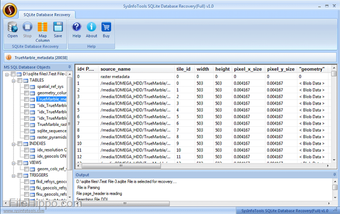
- #Sqlite download and install how to#
- #Sqlite download and install install#
- #Sqlite download and install update#
In this case it is a new databse so you will see no tables. open command once inside the sqlite prompt the file that contains the database will not be created on disk. For example if you ran the command in the Downloads folder, you would see the. sqlite3 my-database.dbĪ file named my-database.db will be created in the directory you ran the command. With SQLite installed on your machine, you can run the following from the command line.
#Sqlite download and install install#
Ubuntu and Debian Install sudo apt-get install sqlite3įedora and RedHat Install sudo yum install sqlite3 For example you can run the following commands on different operatings systems.

You can use a package manager and specify sqlite. You can use a package manager like Scoop and run a command like scoop install sqlite3. From there you can us the SQLite command line. To install for Windows, we recommend the sqlite-tools-win32-x86 download under Precompiled Binaries for Windows on the SQLite Download Page. We recommend having the Brew Package Manager on your Mac. Below are instructions for doing so in macOS, Windows, and Linux. However you may also want to install SQLite directly on your system. In the Arctype Client you can create new SQLite databases, write queries against them, and visualize data. You do not need to install anything special to start using SQLite in Arctype.
#Sqlite download and install how to#
This guide describes how to visually inspect a SQLite database and write queries against it. It is used in many projects and libraries, including iOS and Android. Now if you have a query or feedback then write us in the comments below.SQLite is a local database which is completely contained within one file on the filesystem. Ok, so you have successfully installed the SQLite database and SQLite DB browser on your Fedora system. Now for any reason, if you want to remove the SQLite and DB Browser for SQLite from your system then run the given command in your terminal – sudo dnf remove sqlite sqlitebrowser -y Conclusion Remove SQLite and SQLite DB browser from Fedora Now you can see the DB Browser for the SQLite in the given image. Launch SQLite browserĪfter successfully installing the above packages you can launch the SQLite browser in your system and create, update, or delete databases.Ĭlick on the Fedora application launcher and search SQLite when its icon appears as you can see in the image below. Press y and then enter when it asks for your confirmation. To install the SQLite browser on your system, run the following command in your terminal – sudo dnf install sqlitebrowser

SQLite browser is a high-quality, graphical, open-source tool to create, design, and edit database files compatible with SQLite. Once installation is completed you can check its version by using – sqlite3 -version Press y and then enter if it asks for your confirmation. Next, use the given command to install SQLite in Fedora – sudo dnf install sqlite
#Sqlite download and install update#
Access to a user account with sudo privilegesĪt the time of writing this article, SQLite3 is the latest version and it is available in the official Fedora repository so we will install it using the dnf command in our terminal.īut before installing it make sure to update the Fedora package repository- sudo dnf -y update.To follow this guide you should have the following –


 0 kommentar(er)
0 kommentar(er)
